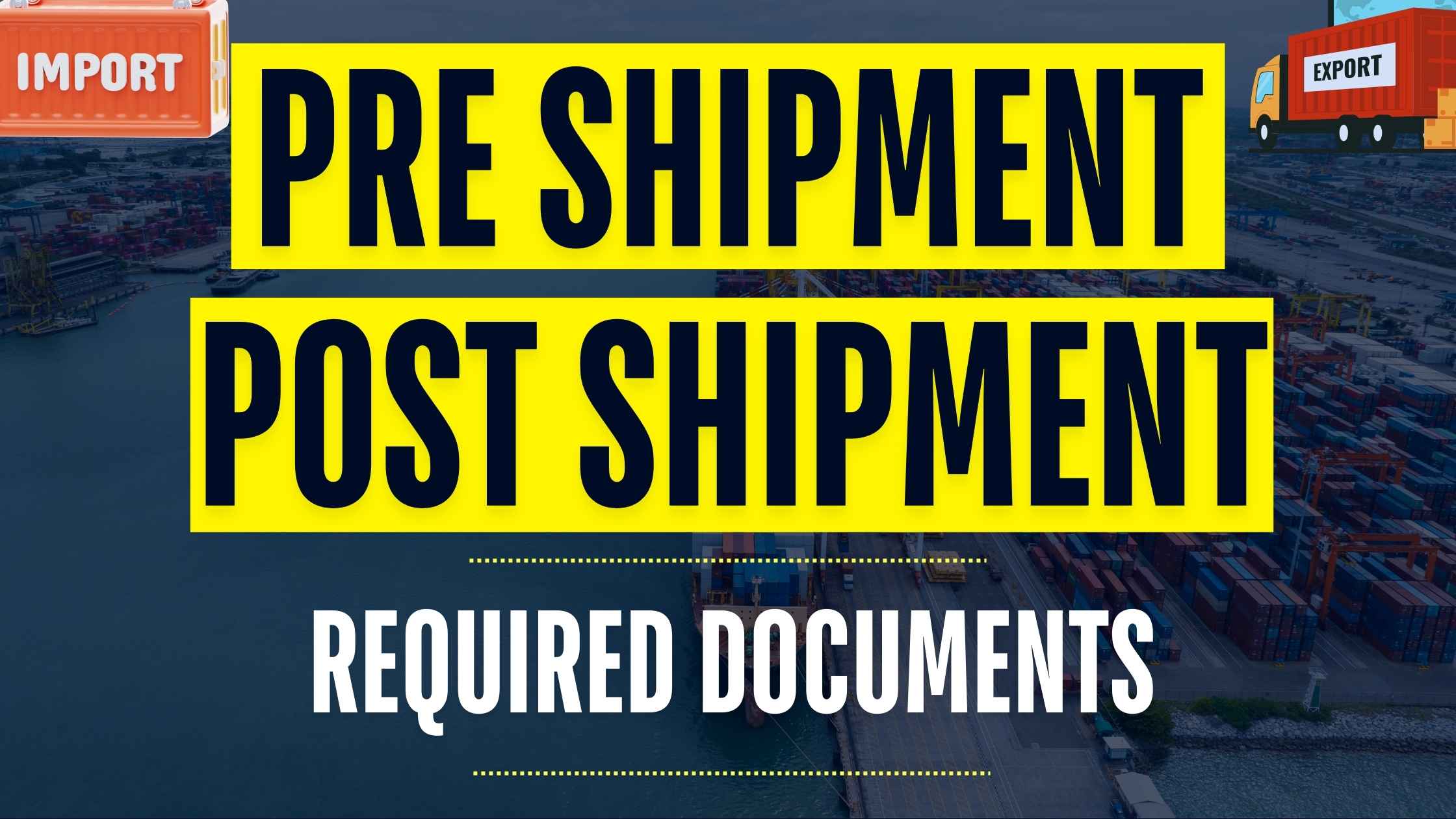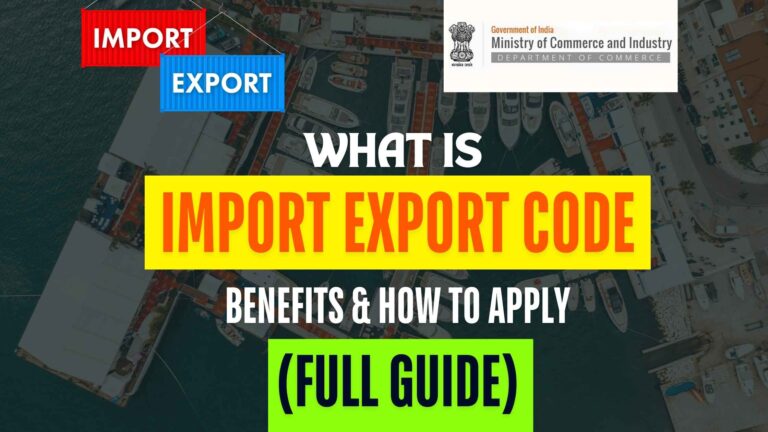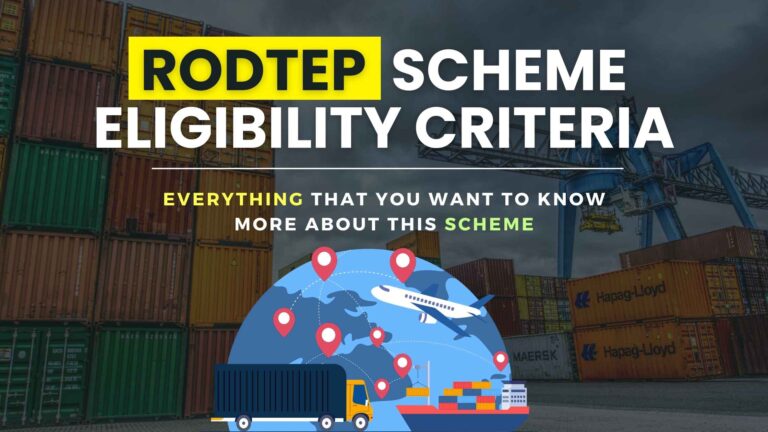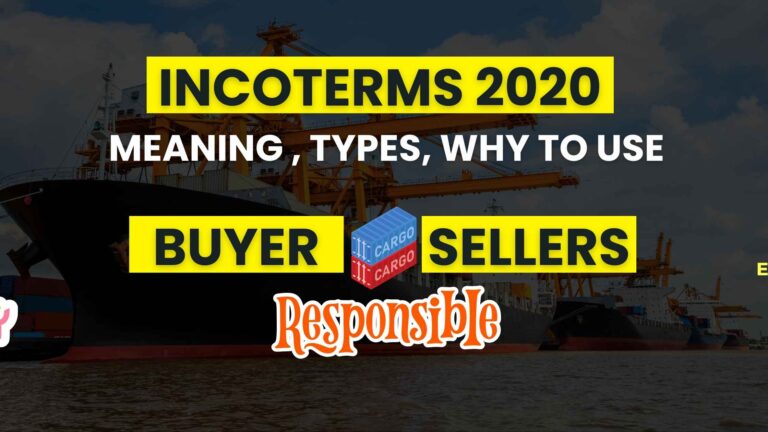Export Import: PreShipment and Post Shipment Required Documents( A Complete Guide For Exporters)
In international trade, having the right documents is very important to ensure goods move smoothly across borders. For exporters, knowing which documents are needed before and after shipping is essential to follow rules and make the trading process easy. This guide explains the key documents required at preshipment and post shipment statges, helping businesses understand the export process better.
Why Is Proper PreShipment and Post Shipment Documentation Important in Exporting?
Proper documentation is essential in exporting for the following reasons:
- Compliance with Regulations: Ensures adherence to international trade laws and customs requirements.
- Smooth Customs Clearance: Facilitates the quick clearance of goods at both the origin and destination ports.
- Timely Payment Collection: Helps exporters receive payments promptly by meeting documentary requirements of Letters of Credit or Documentary Collections.
- Claiming Export Benefits: Enables exporters to claim incentives, refunds, or rebates such as Duty Drawback or GST refunds.
- Risk Mitigation: Minimizes risks associated with disputes, losses, or damages during transit.
Pre-Shipment Documents Required For Export Business

Pre-shipment documentation involves all the paperwork prepared before the goods are dispatched. These documents serve as a foundation for the export transaction, outlining the terms of sale, product specifics, and compliance with both domestic and international regulations.
- Proforma Invoice
A Proforma Invoice is an initial bill of sale sent to the buyer in advance of a shipment or delivery of goods. It details the goods to be sold, their value, and other key terms of the transaction. This document serves as a negotiating tool and provides the buyer with essential information for import planning.
Key Elements:
- Description of goods
- Quantity
- Price per unit
- Total value
- Payment terms
- Incoterms
Port of Loading - Port of Discharge
- Delivery terms
- Commercial Invoice
The Commercial Invoice is a critical document that serves as a formal demand for payment after the goods have been shipped. It provides a detailed account of the entire export transaction and is used by customs authorities to assess duties and taxes.
Key Elements:
- Exporter and importer details
- Invoice number and date
- Harmonized System (HS) code of the goods
- Shipping terms (Incoterms)
- Payment instructions
- Packing List
The Packing List provides detailed information about the contents of each package or container. It assists all parties involved, including customs authorities, in identifying and verifying the shipped goods.
Key Elements:
- Details of each item
- Number of packages
- Gross and net weight
- Dimensions of packages
- Marks and numbers
- Certificate of Origin
This document certifies the country where the goods were manufactured. It is often required by customs authorities in the importing country to determine tariff rates and ensure compliance with trade agreements.
Issuing Authority:- Local chambers of commerce
- Trade associations
- Inspection Certificate
An Inspection Certificate verifies that the goods have been inspected and meet the specified standards and requirements. This is particularly important for products where quality and compliance are critical.
Issuing Authority:
- Third-party inspection agencies
- Relevant regulatory bodies
- Insurance Certificate
This document provides evidence that insurance coverage has been obtained for the shipped goods. It outlines the extent of coverage and assures the buyer that they are protected against potential losses during transit.
Key Elements:
- Type of coverage
- Insured value
- Policy number
- Insurer details
- Export License
Certain goods may require an export license, which is an official authorization granted by the government allowing the exporter to proceed with the shipment. This is typically necessary for items that are regulated for reasons such as national security or trade protection.
Issuing Authority:
- Directorate General of Foreign Trade (DGFT)
- Relevant government departments
- Shipper’s Letter of Instruction
This document provides the freight forwarder with specific instructions regarding the shipment of goods. It ensures that the exporter’s requirements are clearly communicated and adhered to during the shipping process.
Key Elements:
- Special handling requirements
- Routing preferences
- Documentation instructions
Post-Shipment Documents Required For Export Business
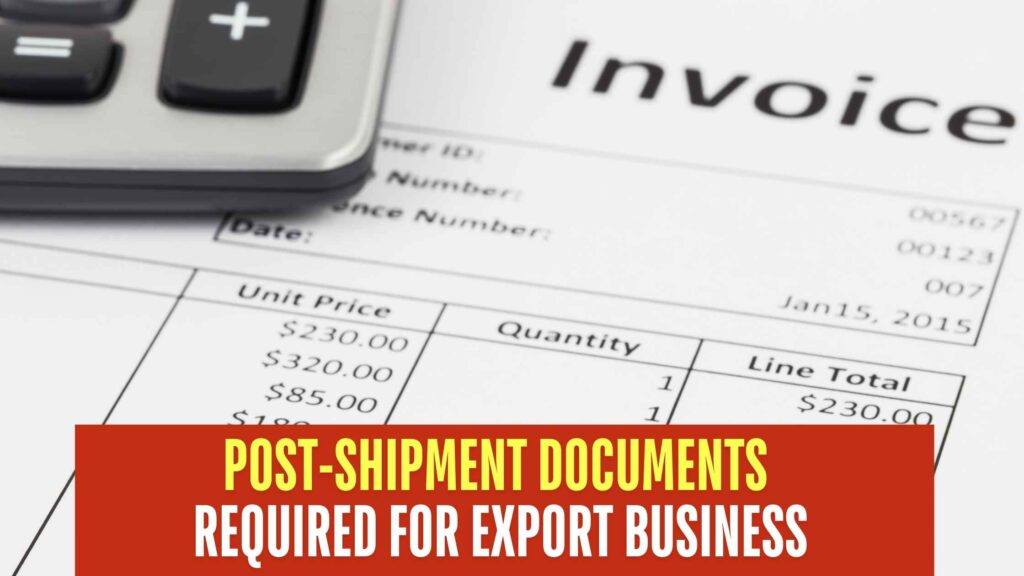
Post-shipment documentation encompasses all the paperwork prepared after the goods have been dispatched. These documents are essential for the completion of the export process, facilitating customs clearance, payment collection, and compliance with both domestic and international regulations.
- Bill of Lading
The Bill of Lading is a pivotal document in the shipping process, serving multiple functions: it acts as a receipt for the goods, a document of title, and a contract of carriage between the shipper and the carrier.
Types:- Inland Bill of Lading: For overland transport.
- Ocean Bill of Lading: For sea freight.
- Air Waybill: For air freight.
- Commercial Invoice
As previously mentioned, the Commercial Invoice is a detailed statement of the transaction, and a copy is often required post-shipment for customs clearance and payment processing. - Packing List
A duplicate of the Packing List prepared during the pre-shipment phase is used post-shipment to assist in customs clearance and inventory management. - Certificate of Origin
A copy of the Certificate of Origin is often required by the importing country’s customs authorities to verify the origin of the goods for duty assessment.
- Inspection Certificate
If an Inspection Certificate was required before shipment, a copy is needed post-shipment to facilitate customs clearance and assure the buyer that the goods meet the specified standards. - Insurance Certificate
The Insurance Certificate is submitted to the buyer or the buyer’s bank to claim compensation in case of loss or damage during transit. It is also required during customs clearance to verify the insured value of the goods. - Bill of Exchange
A Bill of Exchange is a document demanding payment from the buyer for the shipped goods. It is typically used under a Letter of Credit or Documentary Collection transaction.
Types:- Sight Draft: Payment is made immediately upon presentation.
- Usance Draft: Payment is made on a specified future date.
- Bank Realization Certificate (BRC)
The Bank Realization Certificate is proof of payment received by the exporter in foreign currency. It is required by the Reserve Bank of India (RBI) and other regulatory bodies to confirm that the export proceeds have been realized. - Export General Manifest (EGM)
The Export General Manifest is filed by the carrier (shipping line or airline) with the customs authorities to confirm that the goods have been exported out of the country. It is necessary for claiming export incentives and benefits. - Customs Clearance Documents
After shipment, the following documents are used for customs clearance in the importing country:
- Import Declaration Form
- Commercial Invoice
- Packing List
- Bill of Lading or Air Waybill
- Certificate of Origin
FAQs Related to Pre-Shipment and Post-Shipment Documents

What is the difference between pre-shipment and post-shipment documents?
Pre-shipment documents are prepared before dispatching goods, ensuring compliance and facilitating the export process, while post-shipment documents are used after dispatch for customs clearance, payment collection, and regulatory compliance.
Is a Commercial Invoice required in both pre-shipment and post-shipment stages?
Yes, a Commercial Invoice is required at both stages. It serves as a quotation during pre-shipment and as a payment demand during post-shipment.
Who issues the Certificate of Origin?
It is typically issued by local chambers of commerce or relevant trade associations to certify the manufacturing country of the goods.
What is the importance of an Inspection Certificate?
It assures the buyer that the goods meet the agreed-upon quality and compliance standards, minimizing disputes and returns.
What is the role of a Bill of Lading?
It serves as a receipt of goods, a document of title, and a contract of carriage between the exporter and the carrier.
Why is an Insurance Certificate necessary?
It provides coverage against potential losses or damages during transit, safeguarding both the exporter and the buyer.
What is a Bank Realization Certificate (BRC)?
It is proof of payment received by the exporter in foreign currency, required for regulatory compliance and claiming export benefits.
Is the Export General Manifest (EGM) mandatory?
Yes, it is mandatory for customs compliance and to claim export incentives.
Can a freight forwarder help with export documentation?
Yes, freight forwarders assist exporters in preparing, verifying, and submitting all necessary documents for smooth international shipping.
Note: Proper handling of pre-shipment and post-shipment documents is crucial for successful export transactions. These documents not only ensure regulatory compliance but also facilitate smooth customs clearance, secure payments, and claim export incentives. By understanding and efficiently managing these documents, exporters can minimize risks, avoid delays, and maximize profitability in international trade.
If you want to learn import-export from basics to advanced, including company formation, import-export documents, product research in exports, finding foreign buyers, pre-shipment and post-shipment documentation, GST in exports, payment terms, Incoterms, and more, then watch this 7-hour video by Mr. Keshav Dimri, a successful exporter and brilliant marketer working since 2017.
